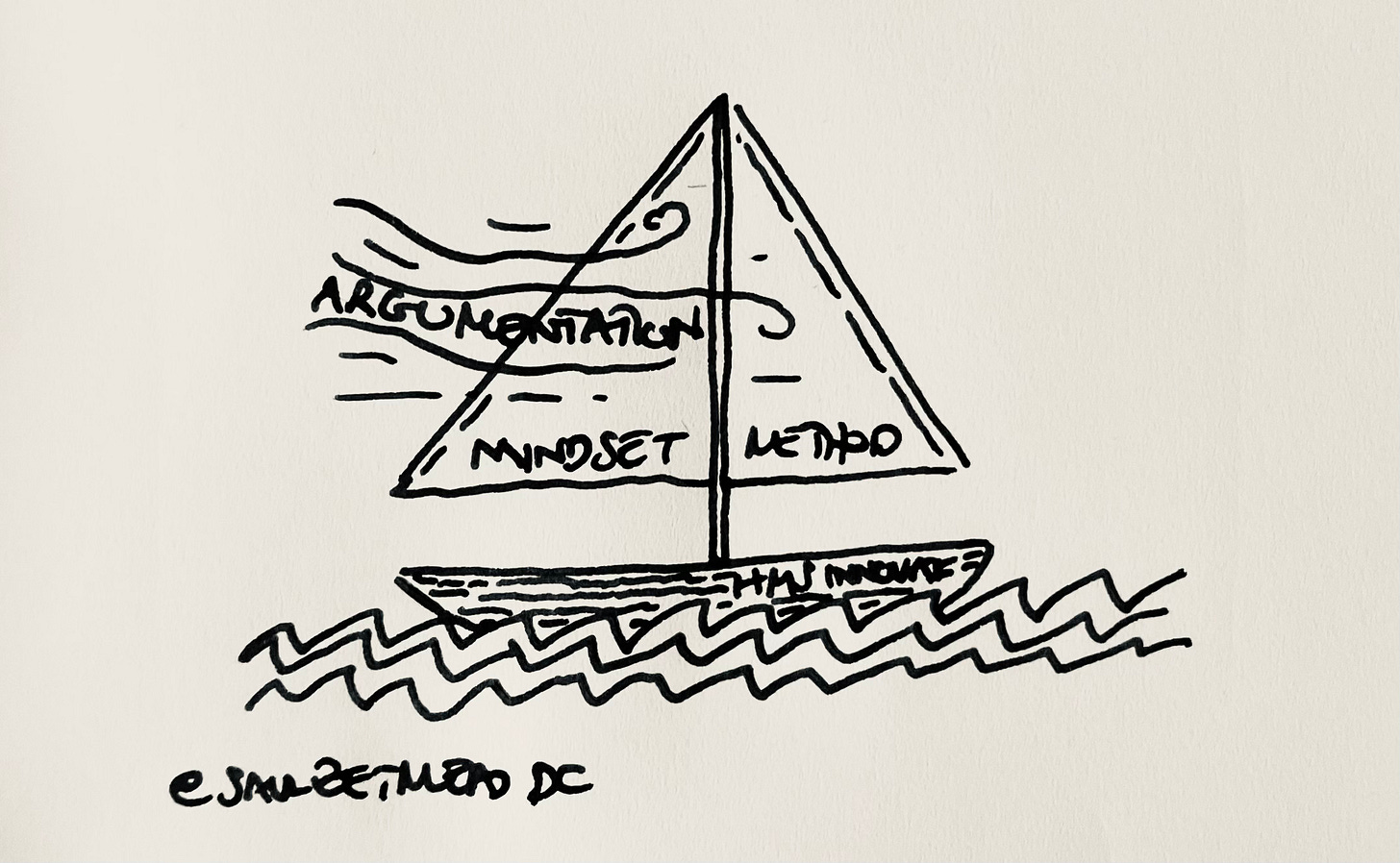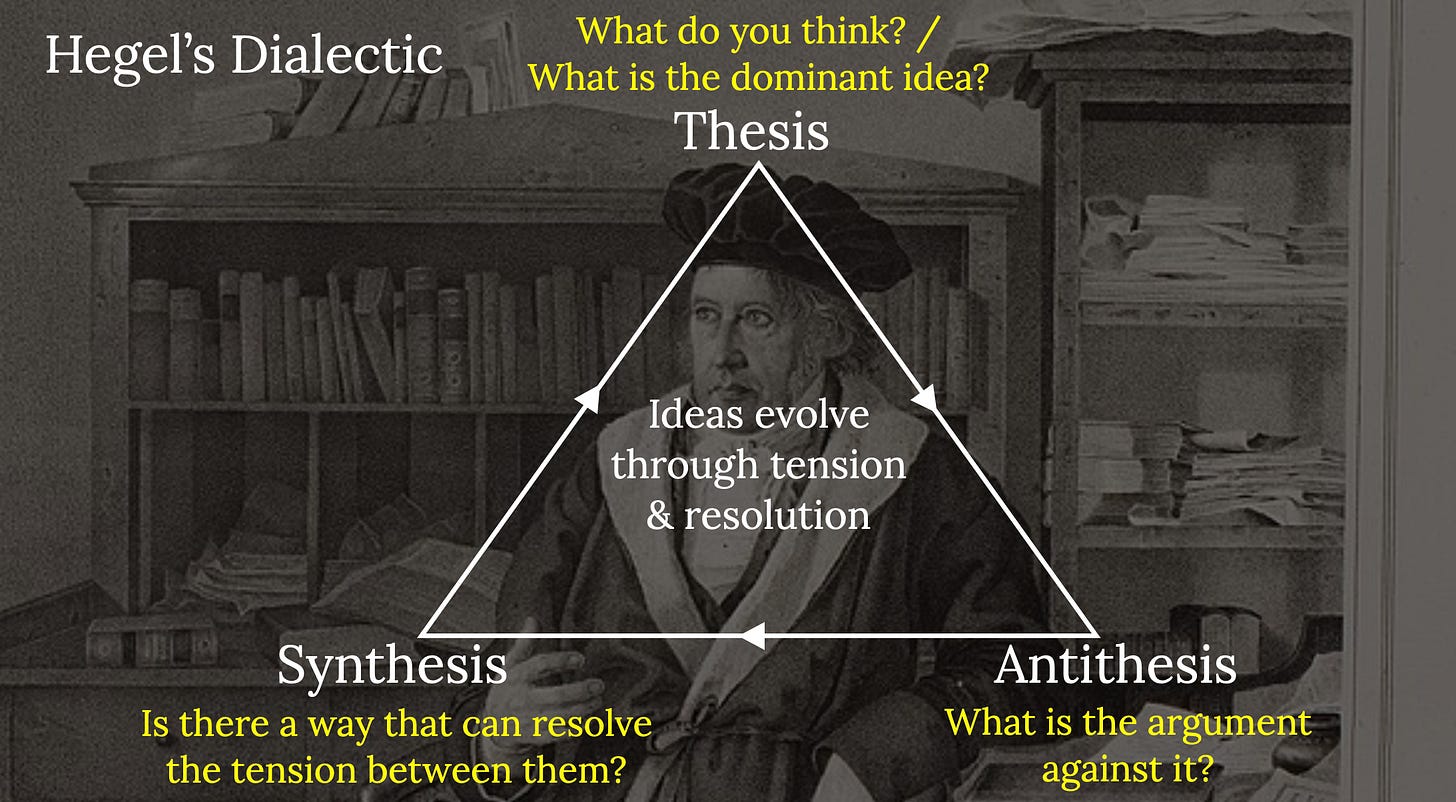Argumentation, the engine of innovation and growth.
Mindset, method, sense making and sense giving.
The similarities between Academia and Start Ups are not at first that obvious.
Even more so when you get near Oxford or Cambridge, both of which over 900 years old and not exactly known for being agile and disruptive.
That is until you strip the world of academia back to first principles: there you find on one side, the acquisition and application of knowledge; and on the other, a profound need for growth, to move thinking and ideas forward whatever the discipline or department.
Entrepreneurs too often seek to build new kinds of knowledge, new ways to think about situations and then apply those convictions to try and move the world forward in a particular way, in a particular place.
What they also both have in common is what sits at the center, the engine: what I will call ‘argumentation’, the ability to think critically, challenge conventional thinking and then act on what you find.
This argumentation is born of two core capabilities, one in Mindset and one in Method.
The argumentation mindset
For the mindset, you need what management academic and author Jim Collin’s defines as the essence of leadership:
Authority, a deep expertise and knowledge about something, a firm belief that you are right, but also almost its opposite, Humility. The ability to acknowledge that there is a great deal you don’t know and that because the world is in constant change, you might be wrong.
You need to be able to hold these two competing ways of being in place at the same time. You need to be able to hold convictions strongly in the moment, but loosely overtime.
How you do that is as challenging as it sounds and as much about the Method you use as the Mindset you are trying to keep.
The argumentation method
The method is built upon the ability to keep pressure testing your ideas & assumptions with an eye to building new ones should the pressure testing suggest you should.
This is what is known as the cognitive process of ‘sense making’ where we interpret information and experiences to create a coherent understanding of the world.
Sense making
The most elegant way I have found of doing this is from late 17th Century German Philosopher, Georg Hegel, who believed ideas evolve through a continuous process of tension & resolution.
He developed a thinking system for this: Thesis - Antithesis - Synthesis.*
You start with your Thesis: which in this case defines what the conventional thinking, the dominant design and the assumptive ideas are around a particular area.
You then have your Antithesis: where you ask what the arguments against these are, forcing yourself to look for credible angles of attack, finding places where the conventional thinking doesn’t hold true and where people have found workarounds that a show a different way of doing is possible.
You then have your Synthesis: where you take these two opposing positions and find something that builds to and from both, one that is able to resolve the tension between the two.
The system is built for change, it’s constructed to evolve because your Synthesis then becomes your new Thesis, and you start again.
For each step you must ask what is an opinion and what is evidential? You will often find opinions, especially deeply ingrained ones in categories and disciplines, that aren’t necessarily grounded in evidence, or when they are, they are evidenced in what what was then, not what is now.
Whether you are an academic pushing the limits of your discipline, an entrepreneur seeking genuinely radical ideas, or an existing business leader trying to challenge your business before someone else does it for you, this process is essential.
For those interested in a deeper dive into an innovation system built on these principles you can read more here:
This means that at any given moment, the individual and/or organisation will have a point of view built from a system designed to challenge assumptions and then create new ones, if new ones feel like they are required.
It forces you to look at assumptions, it encourages you to find ideas that are not what everyone else is doing, not for the sake of being innovative, but for the sake of finding a genuinely better way.
What you then need is another thinking system designed to do provide something quite different: ‘sense giving’ to those outside.
Sense giving
Sense giving is the process of communicating to others in a way that is understandable and meaningful. This is the essence of persuasive communication and without this our academics, entrepreneurs and organisation leaders won’t get very far, however good their thinking and ideas are.
A new idea is only as good as your ability to persuade others of its worth.
The most effective system I have found comes from British philosopher and logician Stephen Toulmin, who created a framework for analysing and constructing arguments. It is made of 6 steps;
Claim: The main point you're trying to prove.
Grounds: The evidence or facts that support your claim.
Warrant: The reasoning that connects your grounds to your claim.
Backing: Additional evidence, authority or social proofs that supports your warrant.
Qualifier: Words that limit the scope of your claim, such as "usually" or "sometimes."
Rebuttal: Potential objections or counterarguments to your claim.
It takes you, and then your audience on a journey to help them buy into what you are selling, as well as helping them buy into you and the organisation you represent.
The reason this system is particularly powerful is that, done well, it also captures many of the key levers of persuasion, defined by Aristotle’s Logos-Ethos-Pathos-Kairos.
Logos: it follows a logical sequence, it can be easily followed, easy understood. Ethos: it begins to build credibility, it shows why they should believe (alongside the credibility of the author: the person and/or organisation). Pathos: it elicits an emotion, because at a very basic level, by acknowledging both the limitations and the counter arguments (borrowed in part from the previous Thesis-Antithesis-Synthesis work) you are giving the audience a feeling that you have done the work, have been willing to look at where you might be wrong (the idea of Authority and Humility again), which is a useful building block to them feeling differently about you and your ideas. And lastly, Kairos: answering the urgency questions: why here, why now?
For those interested in a deeper dive into persuasive storytelling, you can read this:
The closing argument for argumentation
So, we have two essential elements of argumentation: A mindset that is both steeped in authority and conviction but also in humility and open mindedness.
A method which begins with sense making, where we pressure test our thinking, assumptions and ideas to evolve that thinking and those assumptions and ideas.
And then flows into sense giving to help others on the journey to buy into what we are selling and buy into us as the seller.
Here we find the both essence of argumentation, the engine of innovation in all its forms, all its places, and systems to help us do that most essential of skills.
*for those interested this is a form of ‘dialectic’ approach which originates in the ideas of Aristotle.










I misunderestimated this blog.... I think George W Bush came up with Argumentation.
Enjoyed it- thanks!